I have looked and looked and cannot find any resources on. I want to clip an axis aligned bounding box against a triangle in a way that creates a new tight fitting axis aligned bounding box around or in the triangle (I have seen the reverse a lot, a triangle clipped against an axis alinged bounding, but never seen the reverse case). I tried computing the clipped tiangle then building a bounding box from it. But it is grossly inefficent and I don't think my code is correct. Does anyone know how to clip a bounding box against a triangle efficently?
Here is pictures describing what I currently do
typedef uint8_t u8;
typedef uint16_t u16;
typedef uint32_t u32;
typedef uint64_t u64;
typedef int8_t s8;
typedef int16_t s16;
typedef int32_t s32;
typedef int64_t s64;
typedef float f32;
typedef double f64;
struct Point
{
union
{
f32 a[3];
struct
{
f32 x;
f32 y;
f32 z;
};
};
};
struct BoundingBox3
{
Point m_vMin = {FLT_MAX,FLT_MAX,FLT_MAX};
Point m_vMax = {-FLT_MAX,-FLT_MAX,-FLT_MAX};
};
inline
s8 Classify( s8 sign, u8 axis, const Point *c_v, const Point *p_v )
{
const f64 d = sign * ( p_v->a[axis] - c_v->a[axis] );
if ( d > EPSILON )
{
return 1;
}
else if ( d < -EPSILON )
{
return -1;
}
return 0;
}
#define POINT_BUFFER_SIZE 9
inline
void Clip3D_plane( Point *pVerts, s8 sign, u8 axis, u8 *pdwNumVerts, const Point *pPointOnPlane )
{
u8 dwNumVerts = ( *pdwNumVerts );
if ( dwNumVerts == 0 )
{
return;
}
else if ( dwNumVerts == 1 )
{
*pdwNumVerts = 0;
return;
}
Point vNewVerts[POINT_BUFFER_SIZE];
u8 k = 0;
bool b = true; // polygon is fully located on clipping plane
Point v1 = pVerts[dwNumVerts - 1];
s8 d1 = Classify( sign, axis, pPointOnPlane, &v1 );
for ( u8 j = 0; j < dwNumVerts; ++j )
{
const Point &v2 = pVerts[j];
s8 d2 = Classify( sign, axis, pPointOnPlane, &v2 );
if ( d2 != 0 )
{
b = false;
if ( ( 0x80 & ( d2 ^ d1 ) ) != 0 ) //if signs differ
{
const f32 fAlpha = ( v2.a[axis] - pPointOnPlane->a[axis] ) / ( v2.a[axis] - v1.a[axis] );
Point_Lerp( &v2, &v1, fAlpha, &vNewVerts[k++] );
}
else if ( d1 == 0 && ( k == 0 || !Point_Equals( &vNewVerts[k - 1], &v1 ) ) )
{
vNewVerts[k++] = v1;
}
if ( d2 > 0 )
{
vNewVerts[k++] = v2;
}
}
else
{
if ( d1 != 0 )
{
vNewVerts[k++] = v2;
}
}
v1 = v2;
d1 = d2;
}
if ( b )
{
return;
}
*pdwNumVerts = k;
for ( u8 j = 0; j < k; ++j )
{
pVerts[j] = vNewVerts[j];
}
}
inline void BoundingBox_Append( BoundingBox3 *pBB, const Point *pvPoint )
{
pBB->m_vMin.x = min( pBB->m_vMin.x, pvPoint->x );
pBB->m_vMin.y = min( pBB->m_vMin.y, pvPoint->y );
pBB->m_vMin.z = min( pBB->m_vMin.z, pvPoint->z );
pBB->m_vMax.x = max( pBB->m_vMax.x, pvPoint->x );
pBB->m_vMax.y = max( pBB->m_vMax.y, pvPoint->y );
pBB->m_vMax.z = max( pBB->m_vMax.z, pvPoint->z );
}
void BoundingBox_ClipAndAppendTri( BoundingBox3 *pBB3, Point *pVerts, u8 *phwNumVerts, const BoundingBox3 *pClipBox )
{
for ( u8 axis = 0; axis < 3; ++axis )
{
Clip3D_plane( pVerts, 1, axis, phwNumVerts, &pClipBox->m_vMin );
Clip3D_plane( pVerts, -1, axis, phwNumVerts, &pClipBox->m_vMax );
}
for ( u8 vert = 0; vert < *phwNumVerts; ++vert )
{
BoundingBox_Append( pBB3, &pVerts[vert] );
}
}


